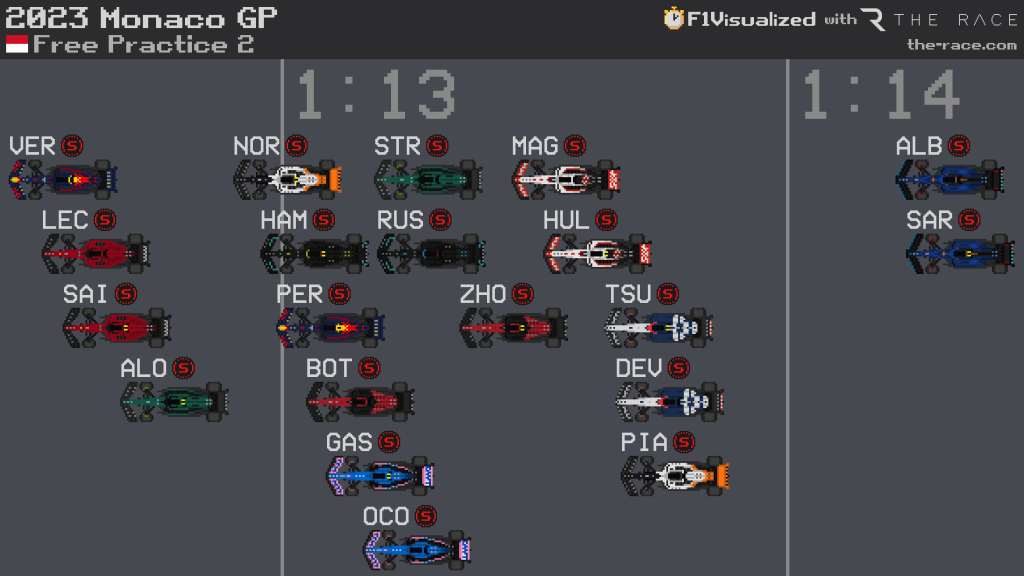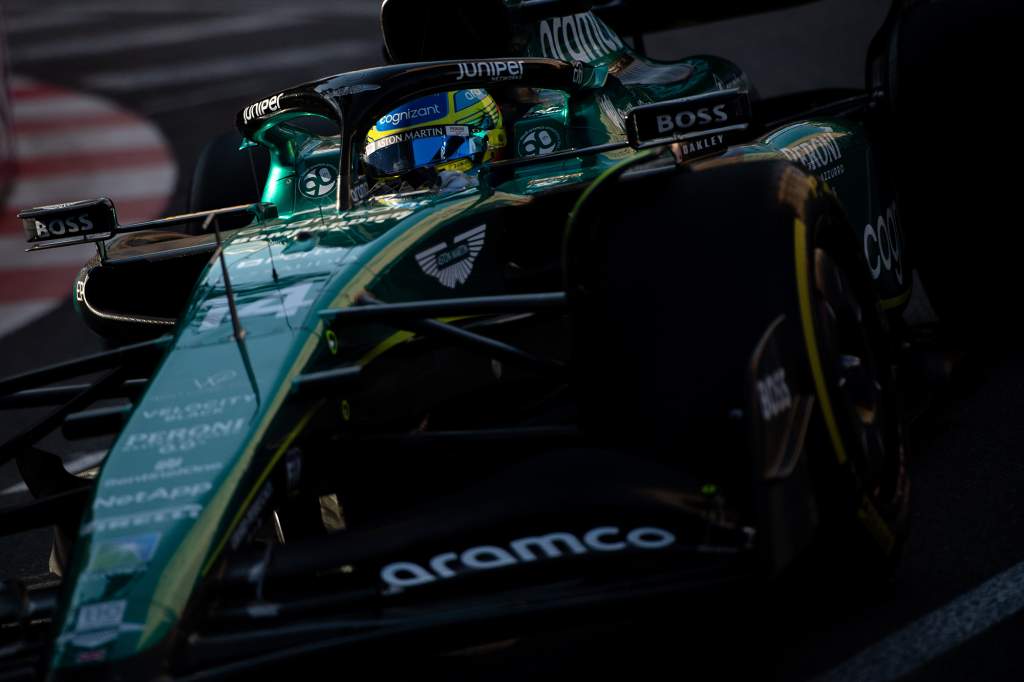Up Next

For all that the Monaco Grand Prix may represent the best chances of the 2023 Formula 1 season so far for Ferrari or Aston Martin to beat the so-far invincible Red Bull, Friday practice indicated that is still going to be a formidable task.
Actually, the first session suggested there might be something to the logic which said the lack of straights and gentle tyre characteristics of Monte Carlo could provide the Red Bull RB19 with some difficulties.
In that session Max Verstappen struggled with the car bottoming out over the bumps so badly as to be ‘undriveable’, leaving him only sixth-fastest and 0.9s off the pace of Carlos Sainz’s Ferrari (and slower also than Fernando Alonso’s Aston Martin and Lewis Hamilton’s revised Mercedes).
But a substantial increase in front ride height for the second session brought the Red Bull much more fully into its sweet spot, allowing Verstappen to top the times – albeit only narrowly from the two Ferraris.
Race pace is probably less important here than at any other venue given the lack of overtaking opportunities but for what it’s worth Esteban Ocon’s Alpine was actually marginally faster than Verstappen in the long runs (the assumption very much being that it was running with less fuel).
Long run averages
| Softs | Mediums | ||||
| Ocon | 1m16.249s | (6 laps) | |||
| Verstappen | 1m16.387s | (8 laps) | |||
| Perez | 1m16.544s | (5 laps) | |||
| Hamilton | 1m16.754s | (5 laps) | |||
| Alonso | 1m17.010s | (6 laps) | |||
| Russell | 1m 17.06s | (4 laps) | |||
| Gasly | 1m17.392s | (6 laps) | |||
The medium tyre is much the favoured one for the race even though the soft looks to be around 1s faster over a lap. In the straightforward running of the race, it will be a one-stop, probably running a soft/medium combination from anywhere near the front, with perhaps a medium/hard being favoured further back in an attempt at gaining track position by running long.
Excepting the always quite likely randomising effect of safety cars here, the two key components to victory in Monaco are a) pole position, b) converting that pole into the lead and c) not allowing the following car an undercut opportunity around the pitstop window. The common way of defending that is to set a pace slow enough to bunch the whole field, so preventing gaps for the pitting car to drop into. Tyre performance and compound differences will tend therefore to be less important than usual.
So assessing each of the contenders’ prospect of the most valuable pole of the season, Verstappen starts as favourite given his FP2 performance. But it wasn’t by enough of a margin to make it a done deal. At less than half-a-tenth quicker than Charles Leclerc – and Sainz only a further half-a-tenth off (before crashing out late in the session at the swimming pool exit) – it’s likely to come down to the individual driver performances in Q3.

Leclerc, polesitter of the last two years, has demonstrated before his astounding ability to stretch the elastic around here when the crucial moment comes. That elastic can, of course, snap.
Comparing the best FP2 laps of Verstappen and Leclerc, there is perhaps the ghost of the Red Bull’s initial reluctance to get the tyres fully up to temperature at the start of the lap as Leclerc is ahead all the way up to Mirabeau.
It’s only as they attack the tight sequence from the hairpin to Portier that the Red Bull begins edging ahead. Verstappen seems able to get through Portier in particular better than the Ferrari and that advantage carries through the tunnel – which is where the real damage is done.
Leclerc is mighty through the chicane and claws back all that he’s just lost. Verstappen gets ahead once more until they arrive at the swimming pool section where the Ferrari’s agility and Leclerc’s commitment pay back and at the exit of the swimming pool he’s over 0.1s ahead. Perhaps that’s overheated the Ferrari’s tyres because it’s only in the remaining sequence through Rascasse, Noghes and up to the start/finish line that Verstappen gets back ahead.
It looks close enough, in other words, that it could go either way.
Although Sainz looked pretty much as quick as Leclerc in the practices, maybe even ahead initially, Leclerc has so many times pulled something special from the bag that he would seem to be the biggest threat to a Verstappen pole.
Sergio Perez in the other Red Bull had a low-key couple of sessions but it would be no surprise to see his natural affinity with the track become more evident.

Although Alonso’s Aston Martin was quick every time it ran, it seems not quite as agile as the Ferrari, not as quick through the tunnel as the Red Bull. It’s somewhere close, but perhaps a couple of tenths off over a lap.
The heavily revised Mercedes with its new sidepods and front suspension was not significantly more competitive than the original car at previous venues, with Lewis Hamilton around 0.5s off Verstappen/Leclerc territory. The drivers reported it felt perhaps slightly better under braking than before but the GPS reveals that it loses a lot of time to Red Bull, Ferrari and Aston Martin in the slow corner sequence between the hairpin and Portier.
“Monaco is such a unique circuit, not really the place to be evaluating changes on the car and we knew that coming in,” said George Russell. “We’re almost forgetting about the upgrade and worrying about that next weekend.
“Qualifying is obviously the most important part of the weekend and qualifying is the part of the weekend where we generally struggle. We always do better on a Sunday if you look at the last 18 months…
“We need to get more out of the tyre. We know that the base performance of the car is good but that it tends to under-achieve on Saturday and over-achieve on Sunday. Ideally, we need to flip those over this weekend but [those traits] tend to be a bit baked in.”






